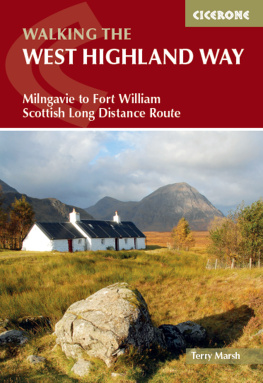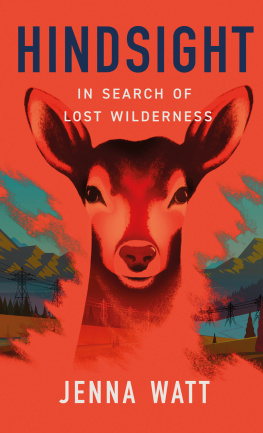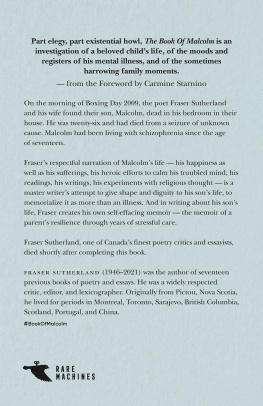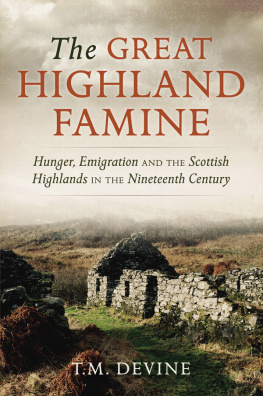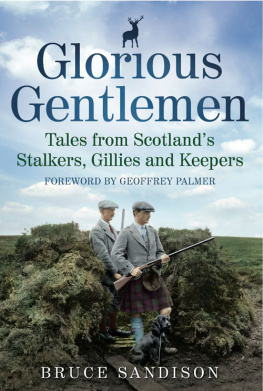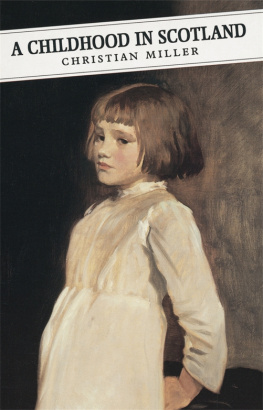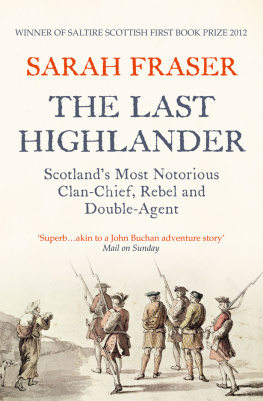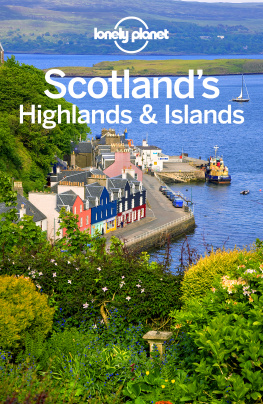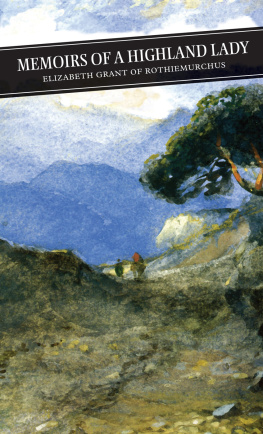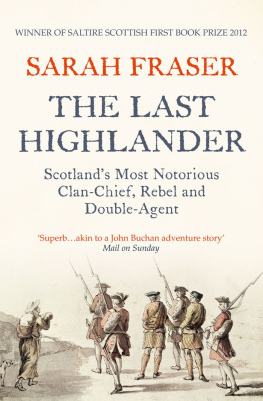Crappit Heids for Tea
Recollections of Highland Childhood
Iby Fraser and Ann Gray
Introduction by Dr Anne-Marie Tindley Compiled by Chris Fletcher
This ebook edition published in 2012 by
Birlinn Limited
West Newington House
Newington Road
Edinburgh
EH9 1QS
www.birlinn.co.uk
Shinness Estate: the Reclamations
and Sutherland Shooting Lodges, 18501920
copyright Anne-Marie Tindley 2012
Recollections of Highland Childhood
copyright Chris Fletcher
Changed Days in the Colaboll Steading
copyright the Estate of Ann Gray
All rights reserved.
No part of this publication may be reproduced, stored or
transmitted in any form without the express written
permission of the publisher.
ebook ISBN: 978-0-85790-536-9
British Library Cataloguing-in-Publication Data
A catalogue record for this book is available from the British Library
Contents
List of Plates
Iby Fraser's manuscript, 'A Wisp of History'.
Reclamation works at Colaboll in the 1870s.
Reclamation works etching from Dunrobin Castle.
Monument to Kenneth Murray of Geanies as it is today.
The Duke's luncheon house on the bank of Loch Shin as it is today.
Daisy and Iby Fraser and Feannach the dog.
John and Margaret Fraser, Daisy and Iby at the Keeper's House, Shinness Lodge, c. 1908.
John Fraser, Iby's father.
Margaret Fraser, Iby's mother.
Iby Fraser
Uncle Donald, Normanna, Daisy, Iby and Bob Munro.
The coming of the car at the Sutherland Arms Hotel Lairg, c. 1911.
J. R. Campbell's car.
Taking home the peats, with Ben More Assynt in the background.
Tinkers' encampment near loch Shin.
Tinkers on the road in the 1930s.
Shooting party at Shinness on the Aird in the 1920s.
Looking west towards Shinness Farm (now West Shinness Lodge) from the Aird in the 1920s, on ground now flooded.
Shooting party on Cnoc an Ulbhaidh, Shinness.
A page from M.E. Sanderson's game book, noting MES and Fraser as guns.
House party at Shinness Lodge in the 1920s.
Colaboll Farm before the First World War, with Alec Gray as a boy, on the left
Some of the Gray family, probably in the mid 1930s.
Graduation portrait of Ann Gray.
Ann Gray.
Acknowledgements
Many people have enthusiastically helped me to compile this book. First, thanks to the SWRI in Lairg who, many years ago, had the idea of encouraging Iby Fraser and Ann Gray to present their recollections. Both of them wrote these down so we can read them ourselves. Iby's recollections were addressed to my mother Margaret Fletcher, who lived at Shinness Lodge from 1958 until 2007. Iby suggested that they be burned once read, and I must therefore thank my mother (a magpie collector in the book world) for not doing so.
There are then many other people to mention.
Dr Anne-Marie Tindley of Glasgow Caledonian University has written the historical introduction and also found in Reading the photographs of the steam ploughs doing their work in the 1870s at Shinness. She diligently spent many hours to research Shinness. Her knowledge of the history of Sutherland has been a wonderful source for the book.
Robin Johnston (Iby's great nephew and former pupil) and Paul Gray (Ann Gray's cousin) have given much help in providing additional material, biographies and photographs which have found their way into the book.
In addition, Annette Parrott (whose grandfather Reginald Maudsley purchased West Shinness), Pete Campbell (whose great grandfather was J.R. Campbell) and Angela Suther-land (Charlie Armstrong's grand-daughter) have provided photographs, and Lord Strathnaver has supported the project and enabled us to use the image of the reclamations which hangs at Dunrobin Castle.
The Lairg Historical Society chaired by Rev. John Leslie Goskirk were early supporters of the project, and John held a reading of the book when it was first typed up.
The publishing team needs special mention Andrew Simmons at Birlinn, and the editors who helped to refine the text, Karen Howlett and Deborah Warner, put a lot of effort into making the book readable.
Thanks to all of them and the many others who have read the text and had a hand in the final production. I hope the result is as much fun to read as it has been to compile.
Chris Fletcher
Shinness Lodge
May 2012
www.shinnesslodge.co.uk
Foreword
Scotland is often described as Europe's last wilderness, but as the history of this part of the Highlands shows, many people lived there and attempts have been made to improve the living from the wild moorlands for a long time.
By the time Iby Fraser and Ann Gray were born at Shinness, sheep and cattle grazing was only part of the land use; fishing, shooting and stalking were an important addition. Iby describes far more than the life of the gamekeeper working for tenants who took long leases of the lodge. Her lively story is of a happy childhood in a family deeply embedded in the rural Highland life where each member had a part to play. Ann's story of the first 100 years of her family on the farm at Colaboll describes the people she met and the life of the farm. When roads and communications were poor, rural neighbours depended on each other, and the Fraser and Gray families were an important part of the local community.
These accounts are a chance to discover what day to day life was like then, far from the cities. They open a small window onto the benefits and the hardships of Highland gamekeeping and farming in the early 1900s, a time when attempts were being made by the Sutherland family to create better economic use of the land, bringing more people and prosperity to the Highlands.
Over the sixty years since the Second World War, there have been huge changes in the Highlands. Tree planting, power supply, renewable energy, vastly improved communications and tourism have developed land use beyond farming and sport. No longer does a small number of wealthy visitors stay in some style for months at a time as was the case when these memoirs were written. Today many more people can enjoy landscape, nature and the hills during shorter holidays at the places like Shinness and other Highland houses. Visitors find a landscape where much of the land with its sheep, birds and deer, lodges and castles looks little different in their moor and mountain settings described here. But the way of life described by Iby and Ann and their families has vanished. Crappit Heids for Tea brings back a harder and simpler way of life but also captures its warmth and comfortable certainties.


